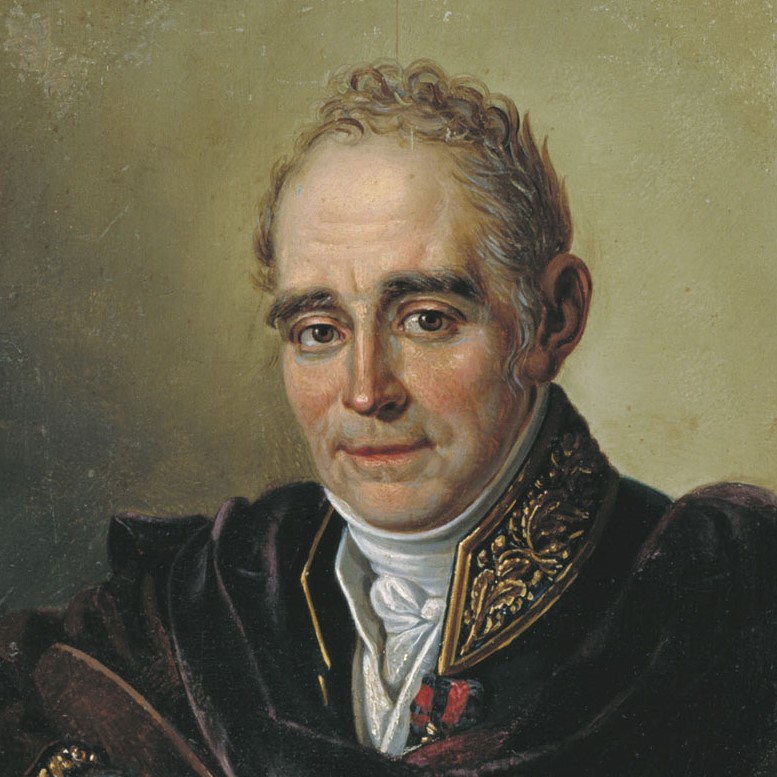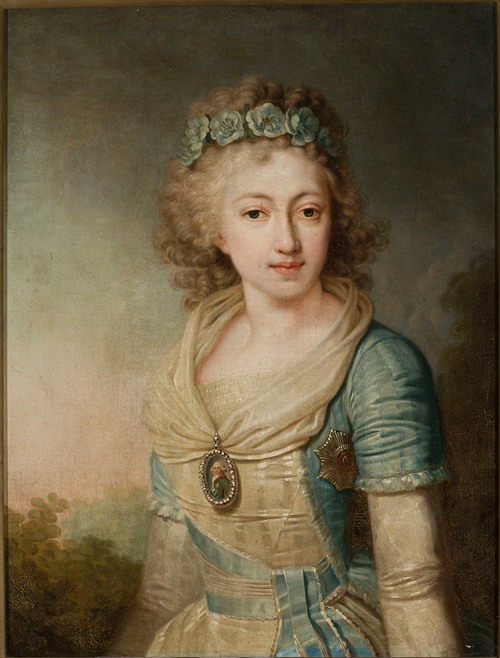

Vladimir Lukich Borovikovsky was a prominent Russian Imperial artist of Ukrainian Cossack background, who served at the court of Catherine the Great and dominated portraiture in the Russian Empire at the turn of the 19th century.
Vladimir Borovikovsky was born in Mirgorod, Cossack Hetmanate, Russian Empire (now Ukraine) on July 24, 1757 in a family with Ukrainian Cossack background. His father, Luka Borovik, was an icon-painter. According to the family tradition, all four of Borovik's sons served as Cossacks in Mirgorod regiment, but Vladimir retired early at the rank of poruchik and devoted his life to art — mostly icon painting for local churches.
Borovikovsky lived in Mirgorod until 1788, where he painted icons and portraits in the Cossack Baroque tradition. His friend Vasily Kapnist was preparing an accommodation for Empress Catherine II in Kremenchuk during her travel to newly conquered Crimea. Kapnist asked Borovikovsky to paint two allegoric paintings (Peter I of Russia and Catherine II as peasants sowing seeds and Catherine II as a Minerva) for her rooms. The paintings so pleased the Empress that she requested that the painter move to Saint Petersburg.
After September 1788 Borovikovsky lived in Saint Petersburg where he changed his surname from the Cossack Borovyk to the more aristocratic-sounding Borovikovsky. For his first ten years in Saint Petersburg, he lived in the house of the poet, architect, musician and art theorist, Prince Nikolay Lvov, whose ideas strongly influenced Borovikovsky's art. At the age of 30 years, he was too old to attend St. Petersburg Imperial Academy of Arts, so he took private lessons from Dmitry Levitzky and later from Austrian painter Johann Baptist Lampi.
In 1795 he was appointed an academician. He became a popular portrait painter and created about 500 portraits during his lifetime, 400 of which survived to the 21st century. He had his own studio, and often relied on assistants to paint the less important parts of a portrait. His sitters included members of the imperial family, courtiers, generals, many aristocrats, and figures from the Russian artistic and literary worlds.
Borovikovsky never taught in the Imperial Academy of Art but pupils lived in his home. Among them were Alexey Venetsianov and Bugaevsky-Blagodarny (who painted the only survived portrait of Vladimir Borovikovsky).
After 1819 Borovikovsky became a Freemason, member of a lodge Dying Sphinx. At that time he mostly painted icons, including Iconostasis of the Smolensky Cemetery church and some icons for Kazan Cathedral in Saint Petersburg.
On April 6, 1825 he died suddenly of a heart attack and was interred in the Lazarevskoe Cemetery of the Alexander Nevsky Lavra in Saint Petersburg.

